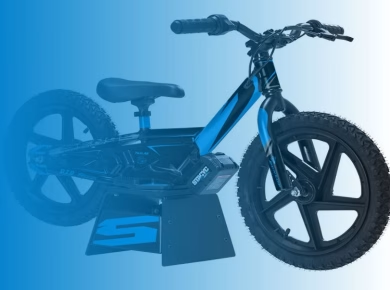When it comes to automating daily tasks and streamlining workflows, few tools have gained as much attention as Zapier and Make (formerly known as Integromat). Both platforms offer unique features that make them appealing to businesses and individuals looking to enhance productivity through automation. But how do they stack up against each other? This article aims to provide an in-depth comparison between Zapier and Make, exploring their functionalities, pricing structures, and use cases to help you determine which tool is best suited for your needs.
Understanding Automation Tools
Automation tools like Zapier and Make are designed to help users connect different applications and automate tasks without requiring extensive coding knowledge. By linking various services, these tools can reduce repetitive tasks, allowing users to focus more on critical business operations. They achieve this by using triggers and actions: a specified event in one application can automatically initiate an action in another.
Zapier: An Overview
Zapier has long been a go-to solution for those looking to automate their workflows. With its user-friendly interface and vast array of integrations, it’s easy to see why many users gravitate toward this platform. As of now, Zapier supports over 3,000 applications, making it one of the most versatile automation tools available.
One of the standout features of Zapier is its straightforward setup process. Users can create “Zaps” by choosing a trigger application, specifying an event, and then defining an action in a second application. This three-step process is intuitive, allowing users to set up automation quickly.
However, while Zapier excels in ease of use, it does have its limitations. For example, users are often restricted to linear workflows. This means that if you want to create more complex automations involving multiple steps or conditional logic, you might find Zapier lacking in flexibility.
Make (Integromat): A Closer Look
Make, previously known as Integromat, is another powerful automation platform that has gained traction in recent years. It differentiates itself from Zapier through its ability to handle more complex workflows. With Make, users can create intricate scenarios that involve multiple steps, conditions, and branches, making it ideal for those who need more than simple linear automation.
Make’s visual interface is one of its defining features. Users can see their entire workflow laid out in a flowchart-like design, enabling them to understand how data flows between applications visually. This can be particularly beneficial for teams working on complex projects who need clarity on how different components interact.
However, the complexity that comes with Make’s capabilities can be a double-edged sword. While it allows for advanced automation, the learning curve can be steeper than that of Zapier. New users may find themselves overwhelmed by the myriad options available.
Comparative Features
When it comes to features, both tools bring something unique to the table. Let’s break down some of the comparative aspects of Zapier and Make.
Integrations
Both platforms boast thousands of integrations, but Zapier has the edge in terms of sheer numbers. With over 3,000 supported applications, users are likely to find the right tools for their needs. Make, while having a smaller library, is consistently adding new integrations and is particularly strong in niche applications.
User Interface
Zapier’s interface is designed for simplicity, making it accessible for beginners. On the other hand, Make’s visual flowchart design can be more intuitive for advanced users looking to create complex workflows. It ultimately depends on the user’s comfort level and the complexity of the tasks they wish to automate.
Pricing Structures
Pricing is another critical factor when choosing between Zapier and Make. Zapier offers a free tier with limited functionality, ideal for users who only need basic automation. Its paid plans scale up based on the number of tasks and premium app integrations required.
Make also provides a free tier, which includes some essential features but limits the number of operations you can run. Its pricing model is based on the number of operations and the frequency of automation execution, which can be advantageous for businesses that require less frequent automation.
Support and Community
Both platforms have robust support and community resources. Zapier has a comprehensive help center and an active community forum where users can share tips and tricks. Make also offers extensive documentation and a dedicated community to help users navigate their automation needs.
Use Cases for Zapier and Make
Understanding the specific use cases for each tool can further clarify which platform might be the best fit for your needs.
When to Choose Zapier
Zapier is particularly beneficial for small businesses or individuals looking for straightforward solutions. If your automation needs are primarily linear and you require a quick setup, Zapier is likely the way to go. It works well for tasks like automatically sharing new blog posts on social media or adding email subscribers to a mailing list.
When to Opt for Make
If you find yourself needing to create complex workflows that involve multiple conditions or branches, Make is the better choice. It’s particularly advantageous for teams that require custom solutions, such as integrating customer support tools with CRM systems or managing detailed project workflows across different applications.
Common Pain Points Addressed
Many potential users often wonder about the limitations of these tools. One common concern for Zapier users is the lack of advanced conditional logic in its free tier. This can restrict users looking to create more sophisticated automations without upgrading to a paid plan.
Make users, on the other hand, often struggle with the initial learning curve. While the advanced features are a significant advantage, new users might feel lost navigating the array of options available. However, once users become familiar with the platform, the breadth of capabilities can significantly enhance their workflow efficiency.
Conclusion: Which Tool is Right for You?
Ultimately, the choice between Zapier and Make boils down to your specific needs. If you value ease of use and a wide range of integrations, Zapier might be the perfect fit. Conversely, if you require advanced automation capabilities and are willing to invest the time to learn, Make could prove to be a more powerful ally in your quest for efficiency.
Whichever tool you choose, both Zapier and Make offer unique advantages that can transform how you handle daily tasks. As automation continues to evolve, these platforms will undoubtedly adapt, providing even more features to meet the growing demands of users. So, take a moment to assess your requirements, explore both options, and embark on a journey toward effortless automation.


